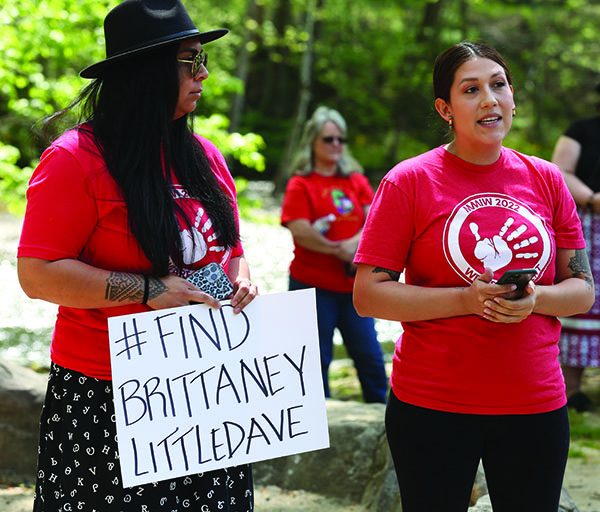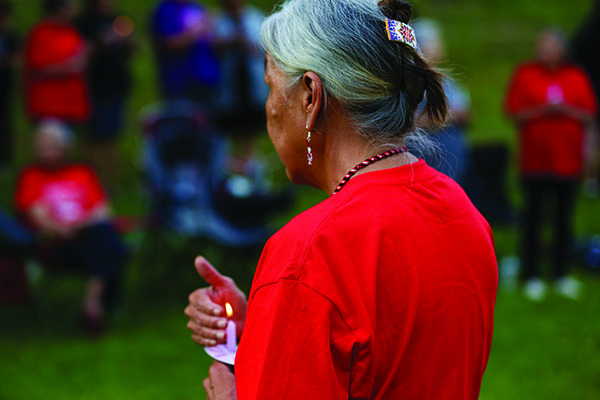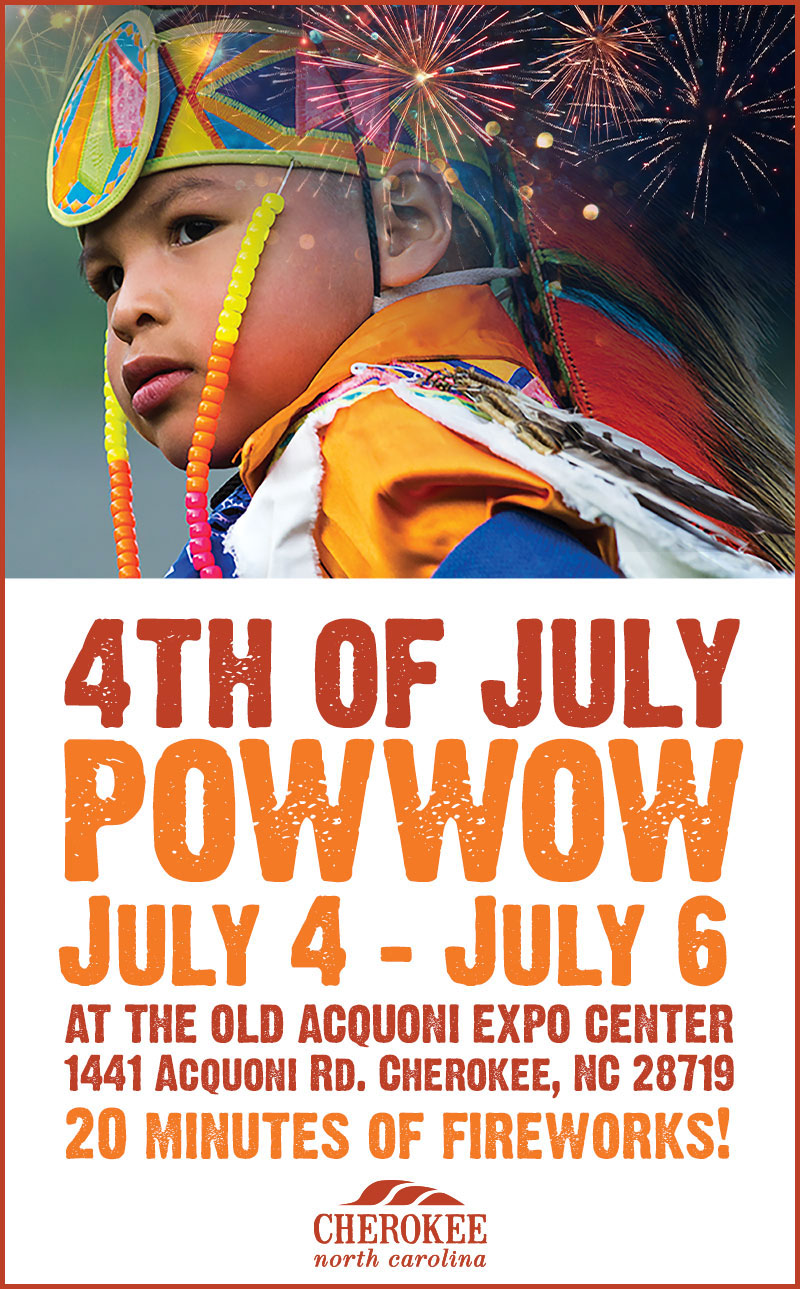By TIA PANTHER
The Missing and Murdered Indigenous Women and Girls (MMIW) crisis is affecting all Nations of Indigenous people today. The MMIW movement was created to spread awareness and give a voice to our stolen sisters whose stories have not been heard.

Maggie Jackson, right, speaks prior to the MMIW Walk on Saturday, April 30 starting as Sheyahshe Littledave holds a sign recognizing her cousin who is currently missing. Along with Ahli-sha Stephens, Jackson and Littledave produce and host the “We Are Resilient” podcast which focuses on MMIW cold cases. (SCOTT MCKIE B.P./One Feather photos)
There are many things that contribute to the lack of justice for those affected and awareness of the movement as a whole. There is a huge shortage of media coverage for the cases of our missing women and girls, as 95 percent of these cases aren’t covered by national or international news and are often overlooked by judicial entities due to jurisdictional complications between Tribal and State jurisdictions. These jurisdictional difficulties are not the only issues with the current justice systems, as Tribal justice systems tend to be under-funded and unable to use funding in the most productive ways, which has forced many families to become detectives of their loved ones’ cases.
Indigenous women are murdered at a rate that is 10 times higher than the national average, according to the U.S. Department of Justice, with homicide being one of the leading causes of death for indigenous women and girls (3rd leading cause for ages 10-24 and 5th leading cause for ages 25-44). These are alarming statistics as the population of native peoples makes up 2 percent of the United States’ overall population.
As a community, we must teach and learn from one another as well as spread awareness to those beyond our communities; and the Cherokee MMIW Committee is working to do just that. The local committee’s mission statement is “Through spreading awareness and education of this emergency, we want our communities to be aware that this crisis is not only an issue on the national level but that it is happening right here on the Qualla Boundary.”
Currently, there are 23 MMIW that we know of from the Qualla Boundary. One of the best ways for those of us living in Indigenous communities to help is to participate in the census and community survey, in order for funds to be allocated more effectively amongst our communities. Getting involved and participating in MMIW events happening in your local area such as protests, walks, vigils, etc. is also extremely helpful in spreading awareness of this issue.
The Missing and Murdered Indigenous Women and Girls crisis is not a trend in which participants put on a red shirt or ribbon skirt, but it is a movement in which we all must fight for justice and representation. These women and girls who have been tragically lost were and still are important. The Cherokee MMIW Committee asks that we come together as a community to protect our women and girls.

Mary “Missy” Crowe, a member of the Eastern Band of Cherokee Indians and an organizer of MMIW events on the Qualla Boundary, holds a candle during the MMIW Candlelight Vigil held at the Unity Field in Cherokee on the evening of Thursday, May 5.






